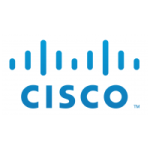Implementing and Operating Cisco Enterprise Network Core Technologies (ENCOR) v1.0
Course Overview
The Implementing and Operating Cisco Enterprise Network Core Technologies (ENCOR) v1.0 course gives you the knowledge and skills needed to configure, troubleshoot, and manage enterprise wired and wireless networks. You’ll also learn to implement security principles within an enterprise network and how to overlay network design by using solutions such as SD-Access and SD-WAN.
This course helps you prepare to take the 350-401 Implementing Cisco® Enterprise Network Core Technologies (ENCOR) exam, which is part of four new certifications:
- CCNP® Enterprise
- CCIE® Enterprise Infrastructure
- CCIE Enterprise Wireless
- Cisco Certified Specialist – Enterprise Core

Course Objectives
After taking this course, you should be able to:
- Illustrate the hierarchical network design model and architecture using the access, distribution, and core layers
- Compare and contrast the various hardware and software switching mechanisms and operation, while defining the Ternary Content Addressable Memory (TCAM) and Content Addressable Memory (CAM), along with process switching, fast switching, and Cisco Express Forwarding concepts
- Troubleshoot Layer 2 connectivity using VLANs and trunking
- Implementation of redundant switched networks using Spanning Tree Protocol
- Troubleshooting link aggregation using Etherchannel
- Describe the features, metrics, and path selection concepts of Enhanced Interior Gateway Routing Protocol (EIGRP)
- Implementation and optimization of Open Shortest Path First (OSPF)v2 and OSPFv3, including adjacencies, packet types, and areas, summarization, and route filtering for IPv4 and IPv6
- Implementing External Border Gateway Protocol (EBGP) interdomain routing, path selection, and single and dual-homed networking
- Implementing network redundancy using protocols including Hot Standby Routing Protocol (HSRP) and Virtual Router Redundancy Protocol (VRRP)
- Implementing internet connectivity within Enterprise using static and dynamic Network Address Translation (NAT)
- Describe the virtualization technology of servers, switches, and the various network devices and components
- Implementing overlay technologies such as Virtual Routing and Forwarding (VRF), Generic Routing Encapsulation (GRE), VPN, and Location Identifier Separation Protocol (LISP)
- Describe the components and concepts of wireless networking including Radio Frequency (RF) and antenna characteristics, and define the specific wireless standards
- Describe the various wireless deployment models available, include autonomous Access Point (AP) deployments and cloud-based designs within the centralized Cisco Wireless LAN Controller (WLC) architecture
- Describe wireless roaming and location services
- Describe how APs communicate with WLCs to obtain software, configurations, and centralized management
- Configure and verify Extensible Authentication Protocol (EAP), WebAuth, and Pre-shared Key (PSK) wireless client authentication on a WLC
- Troubleshoot wireless client connectivity issues using various available tools
- Troubleshooting Enterprise networks using services such as Network Time Protocol (NTP), Simple Network Management Protocol (SNMP), Cisco Internetwork Operating System (Cisco IOS®) IP Service Level Agreements (SLAs), NetFlow, and Cisco IOS Embedded Event Manager
- Explain the use of available network analysis and troubleshooting tools, which include show and debug commands, as well as best practices in troubleshooting
- Configure secure administrative access for Cisco IOS devices using the Command-Line Interface (CLI) access, Role-Based Access Control (RBAC), Access Control List (ACL), and Secure Shell (SSH), and explore device hardening concepts to secure devices from less secure applications, such as Telnet and HTTP
- Implement scalable administration using Authentication, Authorization, and Accounting (AAA) and the local database, while exploring the features and benefits
- Describe the enterprise network security architecture, including the purpose and function of VPNs, content security, logging, endpoint security, personal firewalls, and other security features
- Explain the purpose, function, features, and workflow of Cisco DNA Center™ Assurance for Intent-Based Networking, for network visibility, proactive monitoring, and application experience
- Describe the components and features of the Cisco SD-Access solution, including the nodes, fabric control plane, and data plane, while illustrating the purpose and function of the Virtual Extensible LAN (VXLAN) gateways
- Define the components and features of Cisco SD-WAN solutions, including the orchestration plane, management plane, control plane, and data plane
- Describe the concepts, purpose, and features of multicast protocols, including Internet Group Management Protocol (IGMP) v2/v3, Protocol-Independent Multicast (PIM) dense mode/sparse mode, and rendezvous points
- Describe the concepts and features of Quality of Service (QoS), and describe the need within the enterprise network
- Explain basic Python components and conditionals with script writing and analysis
- Describe network programmability protocols such as Network Configuration Protocol (NETCONF) and RESTCONF
- Describe APIs in Cisco DNA Center and vManage
Course Prequisites
Knowledge and skills you should have before attending this course:
- Implementation of Enterprise LAN networks
- Basic understanding of Enterprise routing and wireless connectivity
- Basic understanding of Python scripting
Target Audience
- Mid-level network engineers
- Network administrators
- Network support technicians
- Help desk technicians
Course Outline
- Examining Cisco Enterprise Network Architecture
- Understanding Cisco Switching Paths
- Implementing Campus LAN Connectivity
- Building Redundant Switched Topology
- Implementing Layer 2 Port Aggregation
- Understanding EIGRP
- Implementing OSPF
- Optimizing OSPF
- Exploring EBGP
- Implementing Network Redundancy
- Implementing NAT
- Introducing Virtualization Protocols and Techniques
- Understanding Virtual Private Networks and Interfaces
- Understanding Wireless Principles
- Examining Wireless Deployment Options
- Understanding Wireless Roaming and Location Services
- Examining Wireless AP Operation
- Understanding Wireless Client Authentication
- Troubleshooting Wireless Client Connectivity
- Introducing Multicast Protocols
- Introducing QoS
- Implementing Network Services
- Using Network Analysis Tools
- Implementing Infrastructure Security
- Implementing Secure Access Control
- Understanding Enterprise Network Security Architecture
- Exploring Automation and Assurance Using Cisco DNA Center
- Examining the Cisco SD-Access Solution
- Understanding the Working Principles of the Cisco SD-WAN Solution
- Understanding the Basics of Python Programming
- Introducing Network Programmability Protocols
- Introducing APIs in Cisco DNA Center and vManage
Lab outline
- Investigate the CAM
- Analyze Cisco Express Forwarding
- Troubleshoot VLAN and Trunk Issues
- Tuning Spanning Tree Protocol (STP) and Configuring Rapid Spanning Tree Protocol (RSTP)
- Configure Multiple Spanning Tree Protocol
- Troubleshoot EtherChannel
- Implement Multi-area OSPF
- Implement OSPF Tuning
- Apply OSPF Optimization
- Implement OSPFv3
- Configure and Verify Single-Homed EBGP
- Implementing Hot Standby Routing Protocol (HSRP)
- Configure Virtual Router Redundancy Protocol (VRRP)
- Implement NAT
- Configure and Verify Virtual Routing and Forwarding (VRF)
- Configure and Verify a Generic Routing Encapsulation (GRE) Tunnel
- Configure Static Virtual Tunnel Interface (VTI) Point-to-Point Tunnels
- Configure Wireless Client Authentication in a Centralized Deployment
- Troubleshoot Wireless Client Connectivity Issues
- Configure Syslog
- Configure and Verify Flexible NetFlow
- Configuring Cisco IOS Embedded Event Manager (EEM)
- Troubleshoot Connectivity and Analyze Traffic with Ping, Traceroute, and Debug
- Configure and Verify Cisco IP SLAs
- Configure Standard and Extended ACLs
- Configure Control Plane Policing
- Implement Local and Server-Based AAA
- Writing and Troubleshooting Python Scripts
- Explore JavaScript Object Notation (JSON) Objects and Scripts in Python
- Use NETCONF Via SSH
- Use RESTCONF with Cisco IOS XE Software
What Our Students Have to Say
"As a client of Makintouch, I would recommend the company as a leading PC-based training school. When we needed half day courses to fit the schedules of our employees they were able to customize them to meet our company’s needs"
– Java Struts

Taiwo Alaka
MTN
I would recommend this course as it is up to date with the current release which is quite rare as things move on so fast. The classroom set up worked well and the labs were good and relevant to the course.’
– Oracle

Kayode Akinpelu
Stanbic IBTC
